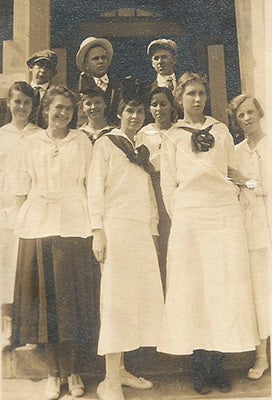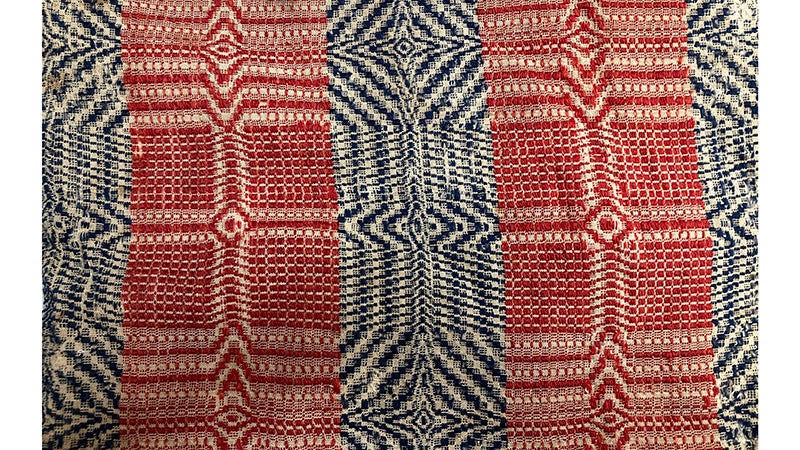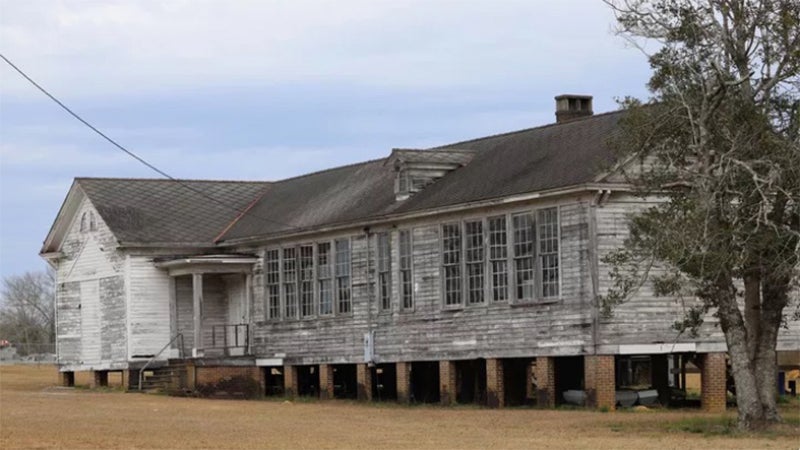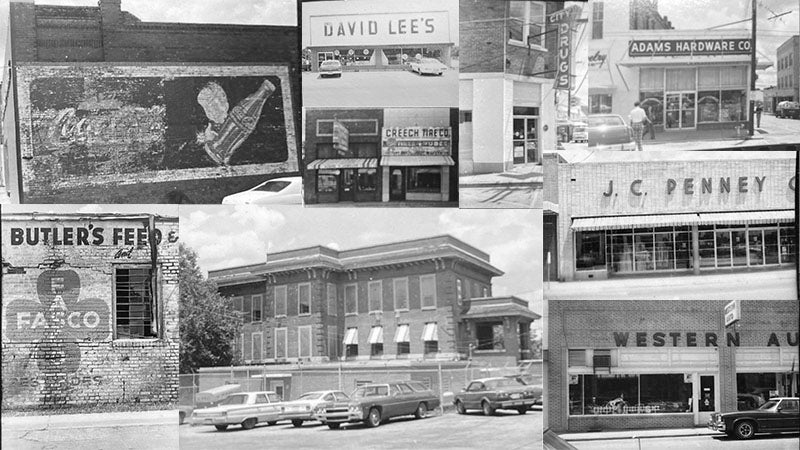Remember when: The way we were in ‘17
Published 3:17 am Saturday, June 10, 2017
1917 – One hundred years ago! America was right in the middle of World War I, “The First World War,” “The Great War,” “The War to End All Wars,” that lasted until November 11, 1918.
“Over There,” a 1917 hit tune written by George M. Cohan was popular with the U. S. military. “We’ll be over, we’re coming over, and we won’t come back til it’s over, over there!”
Try to imagine the little growing town of Andalusia in 1917. People were riding in horse and buggies, mule and wagons around the Public Square that we now call Court Square. A new courthouse was in the final stages of construction on the north Court Square. The courthouse built in the late 1890s located in the center of the square had not been razed yet to make way for the landscaped park that followed. The prominent chiming clock on the bell tower could still be heard from a distance with the bell tolling to remind citizens of their daily routines.
Stately homes had sprung up on the main streets, East Three Notch, South Three Notch, and River Falls Street where variations of white picket fences were in most front yards of the sidewalk neighborhoods. Residences were also built and occupied by families on Riley, Rankin, Auburn, Morrison, Baker, and South Cotton Streets. Those streets were not even paved yet.
The town skyscraper, the First National Bank Building, had not been built yet. Residential neighborhoods on Three Notch Court and Sanford Road did not exist in 1917. The First Methodist Church, a wooden structure, was located on Church Street (across from the present fire station). The First Baptist Church (Circa 1909) was situated off the square on North Three Notch Street (shown on old maps) now known as O’Neal Court. The Magnolia Cemetery was not yet dotted with the graves and headstones of those who would come to die in the 1918-19 worldwide flu epidemic. The First Presbyterian Church, the oldest church landmark today built 1908, on South Three Notch was a fairly new edifice.
There were many one-room schoolhouses out in the county but only one public city school known and referred to in the old newspapers as the Grammar School. This building replaced a smaller brick building that stood closer to the street (Circa 1902). The new building, the East Three Notch School, completed in 1914 (Cornerstone was laid in November 1914.), housed both lower grade students and high school students accommodating a growing enrollment of city school students. The “school marms” were single ladies. The male teachers were called “professors.” (I remember my father once having a conversation with my school principal calling him “Professor Barton.” I was so embarrassed!)
Mail had just started to be delivered by motorized carriers replacing horse-and-buggy service in 1915. The post office building (now the public library) on South Three Notch did not exist in 1917. S. H. (Samuel Hitchcock) Gillis was the mayor of Andalusia. The Opera House, the center for the arts, had just burned (1915). The school auditorium soon became the center for the traveling entertainment shows, plays, recitals, and the graduation ceremonies. Silent movie goers went to the Pickford Theatre. Andalusia had not yet suffered the loss of the first casualties from the “Dixie Division” in World War I. Those tragedies soon followed in 1918.
The moaning train whistles could be heard regularly steaming the engines into and away from town transporting supplies and passengers. The sounds of the hotel porters (“Dixie Hotel, Riley House”) beckoning guests could be heard in and around the train stations. The scent of smoke stacks from the wood and coal fireplaces of homes and business houses could be detected all over the downtown and outlying residential blocks. There were not yet any street lights. A watering trough stood on the east Court Square where East Three Notch intersected with the square. Babies were born at home. The Covington Hospital on the corner of Watson and South Three Notch, a converted Victorian style house, was to later open in 1918.
Thanks to Charles Gantt who brought in his grandmother’s high school scrapbook, “The Girl Graduate, Her Own Book,” Miss Leolive Benson’s keepsakes sheds a lot of insight into the social life in Andalusia in 1917.
Ten students were graduated in the Class of 1917 on May 29, 1917 in the school auditorium – seven girls and three boys. If one notices a smaller number of boys than girls, it was because many of the young men who would have been 2017 graduates were off serving their country in the war.
Diplomas were presented by Superintendent L. E. Brown to Misses Leolive Benson, Annie O’Neal, Ella Gunn, Mildred Gantt, Thelma Windham, Mary McLendon, Cecelia Milligan, Messrs. Worth Gantt, Bartlett Wilder, and Marion Taylor. Brown addressed a few well-chosen remarks to the class. Honorable J. Lister Hill of Montgomery delivered the graduating address. The graduates had marched onto the stage in single file to the strains of a march rendered by Mrs. T. F. Plummer. The exercises were closed with a chorus, “Commencement March” by the high school girls (chorus).
After the graduation exercises, Mr. and Mrs. S. B. Milligan very delightfully entertained the senior class members, the teachers, and the junior class members at their beautiful home on South Three Notch in honor of their daughter, Cecelia, and her senior classmates.
Newspaper accounts read, “The guests were graciously received by Mr. and Mrs. Milligan and Mrs. James McEachin. The lower floor was thrown open to the guests. The class colors, green and gold, were beautifully carried out in the decorations.”
“In the reception hall, daisies (class flower) and Southern smilax were artistically entwined in the stairway and over the doorways and mantels. The library and dining room were in yellow. Marie Antoinette baskets of yellow daisies, tied with yellow tulle were placed about the room. In the parlors, cut glass vases of lovely enchantress carnation and pink roses were used.”
“Mrs. E. C. Gunn conducted the guests into the dining room where Miss Lucile Preston and Mr. R. S. Ward presided over a beautifully appointed punch table.”
“Miss Waters then requested the guests to register in the Girl Graduate Book, after which a dainty ice course was served carrying out the green and gold motif. The girls with their graduating bouquets of daisies and ferns made a picture of unusual loveliness.”
“This reception was a fitting close to a number of beautiful parties given the graduating class – teas, dinners, luncheons. This was the last assembly of the senior class of the high school and of the teachers of the past session and their parting goodbyes were heartfelt when they had come to the end of the evening’s enjoyment.”
President of the class was Worth Gantt; Vice president, Mildred Gantt; Secretary and Treasurer, Annie O’Neal. Class motto was “Impossible is un-American.”
Teachers for the 1916-1917 school session were Miss Vida Mae Jones of Selma, Miss Mattie Waters of Brundidge, Miss Susie Carmichael of Sunny South, Alabama, and Mr. R. S. Ward.
Professor Ward wrote a message to the “good people of Andalusia” – “I should indeed consider myself an ingrate if I did not in some way attempt to express my deep appreciation to you for having made my year spent in your midst one of so much happiness and pleasure to me.
“I have never worked in any place where working was quite so agreeable and enjoyable and have never come to the end of a school year with quite such a feeling of sorrow over the thought of leaving not to return.
“There is a spirit of co-operation between patron and teacher, and loyalty on the part of patrons in your town of which but few towns can boast, and I wish to say that you people are deeply indebted to Supt. Brown for the high ideals which are held by your young people. He is doing a great work.
“If I met with any small degree of success as a teacher in Andalusia, I wish to say that I deserve no credit whatever for it. Any teacher with the co-operation and help which you are anxious to give ought to make a glaring success. On the other hand, if I have failed I deserve the severest criticism and censure from you.
“I shall always think of you people in the very highest terms for you have done much for me. You may count on me as a booster for Andalusia. I am not strong on saying good-bye, and shall not attempt to say it, for I’ll be coming back just as often as you’ll allow it. Always, your friend, R. S. Ward”
I wonder how many teachers from out of town who have come and had the privilege and honor to teach in the Andalusia city schools have held Andalusia and its people in such high esteem like Professor Ward. I feel that there is still a spirit of cooperation between the teachers, the parents, and the townspeople. The task of the administrators of both the city and the county through the years employing top-notch teachers has been remarkable over the past 100 years in Andalusia’s history. As a result, thousands of graduates have gone on to greatness in many fields like the latest graduates of 2017 are certain to do. Just as education enlightens our quality of life, to gain an understanding and an appreciation of the past as we REMEMBER WHEN ensures our path to a brighter future.






